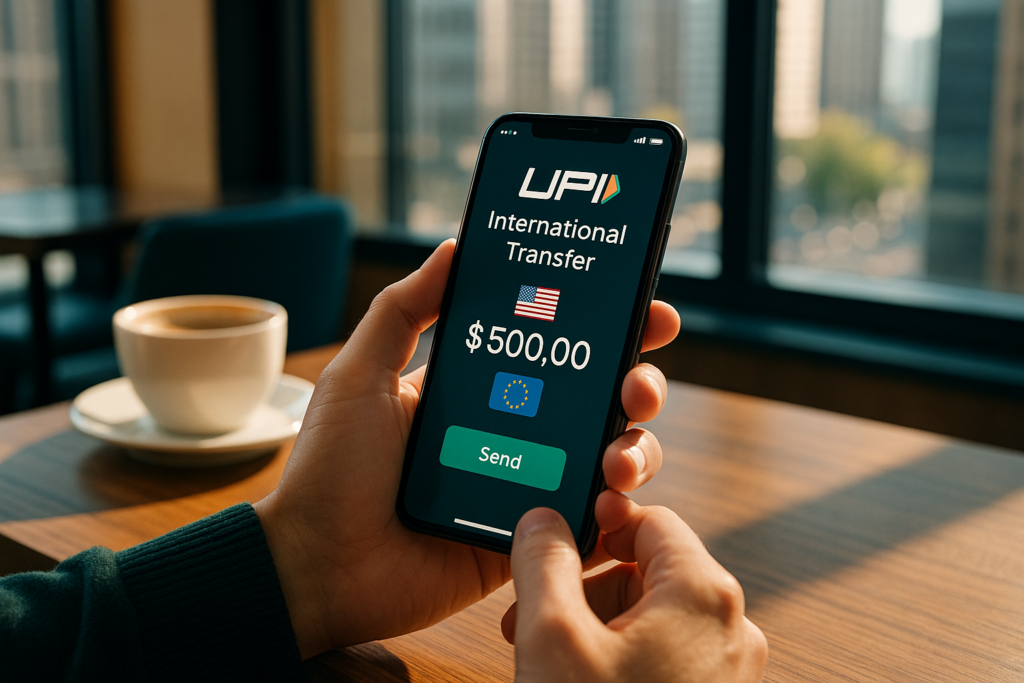The way countries handle cross-border payments is undergoing a significant change. The Universal Payments Interface (UPI), India’s revolutionary real-time payments system, is now joining forces with Project Nexus — an initiative aimed at linking national payment systems globally. This move could streamline international transactions, reduce costs, and make cross-border payments almost instantaneous.
Understanding The Cross-Border Payment Landscape
Traditionally, international money transfer methods have been slow, expensive, and fraught with complexities. Methods like SWIFT, though reliable, take days to process and often involve hefty fees. Consumers and businesses alike have long sought an easier, faster, and cheaper way to transfer funds across borders.
What is UPI and How Has It Transformed Domestic Payments?
UPI, launched by the Reserve Bank of India (RBI) and operated by the National Payments Corporation of India (NPCI), has revolutionized domestic digital payments. It enables instant fund transfers directly between bank accounts through a simple mobile app, 24/7, without the need for card details or IFSC codes.
Today, UPI boasts over 200 crore transactions monthly, serving millions of users for everything from groceries to government subsidies. Its success lies in the simplicity, speed, and zero per transaction fee for users.
Project Nexus: Connecting National Payment Systems Globally
Project Nexus aims to create a seamless digital payment network, linking domestic real-time payment systems like UPI, Singapore’s PayNow, and similar platforms from other countries. By integrating these systems, users can send money instantly across borders without going through traditional channels. This global linkage is intended to reduce transfer times from days to seconds, and significantly cut fees involved.
How UPI’s Inclusion in Project Nexus Will Impact Cross-Border Transactions
The integration of UPI into Project Nexus signals a future where international remittances and transactions become smoother. Here’s what to expect:
- Faster Transfers: Money will move almost instantly, aiding businesses and individuals who rely on quick transactions.
- Lower Costs: Reduced reliance on intermediaries means lower fees for users.
- Increased Transparency: Real-time tracking of transactions enhances trust and reduces fraud.
- Enhanced Financial Inclusion: Many remote and underserved areas could benefit from easier access to cross-border payments.
Challenges and Considerations
While promising, linking these systems isn’t without hurdles:
- Regulatory Harmonization: Countries need to establish mutual agreements on standards and compliance.
- Security Concerns: As digital transactions become borderless, the importance of robust cybersecurity increases.
- Technical Compatibility: Ensuring seamless integration of diverse systems and technologies remains complex.
Governments, regulators, and payment providers must collaborate closely to address these issues for a successful rollout.
Future Outlook and What This Means for Users
For consumers and businesses, the cross-border payment revolution promises greater convenience and efficiency. International remittances could become as simple as local transfers, encouraging global commerce and easing personal payments across countries. It also hints at a future where digital currencies and blockchain could further streamline international transactions.
How to Prepare for the Changes
If you frequently manage cross-border transactions, here are steps to stay ahead:
- Keep your banking and KYC details updated.
- Get familiar with digital wallets and mobile banking apps that support international transactions.
- Stay informed about developments in global payment linkages and regulatory updates.
- Compare credit card and bank transfer options to find the most cost-effective methods for international payments.
FAQs about UPI’s Role in Cross-Border Payments
1. When will UPI be available for international transfers?
While UPI’s inclusion in Project Nexus is promising, a full-scale international rollout is still in development. It may take a few years before UPI becomes a standard method for global transactions.
2. Will there be additional charges for using UPI for cross-border payments?
Potentially, but costs are expected to decrease significantly compared to traditional methods. Exact charges will depend on the agreements between participating countries and banks.
3. How secure are cross-border UPI transactions?
Security protocols are a top priority, with encryption and multi-factor authentication. As with any digital payment, users should ensure they use official apps and avoid sharing sensitive information.
4. Can I use existing UPI apps for international transactions?
Not yet. Once fully integrated, dedicated features within UPI-supported apps will facilitate cross-border payments, but current versions are for domestic use only.
5. How does this impact global remittance companies like Western Union or MoneyGram?
They may need to adapt or partner with national payment systems to remain relevant. Direct integration of UPI into global networks could make traditional remittance services less competitive.
As digital payment systems continue to evolve, the linking of UPI with global real-time payment platforms marks an important step toward more efficient financial connectivity. Keeping an eye on these developments can help you leverage faster, cheaper, and more transparent cross-border transactions in the near future.
For more updates on innovative payment solutions and how they can benefit your financial management, explore our detailed guides and compare credit cards on Find My Card. Stay informed and prepare for the cross-border digital payment revolution today!

